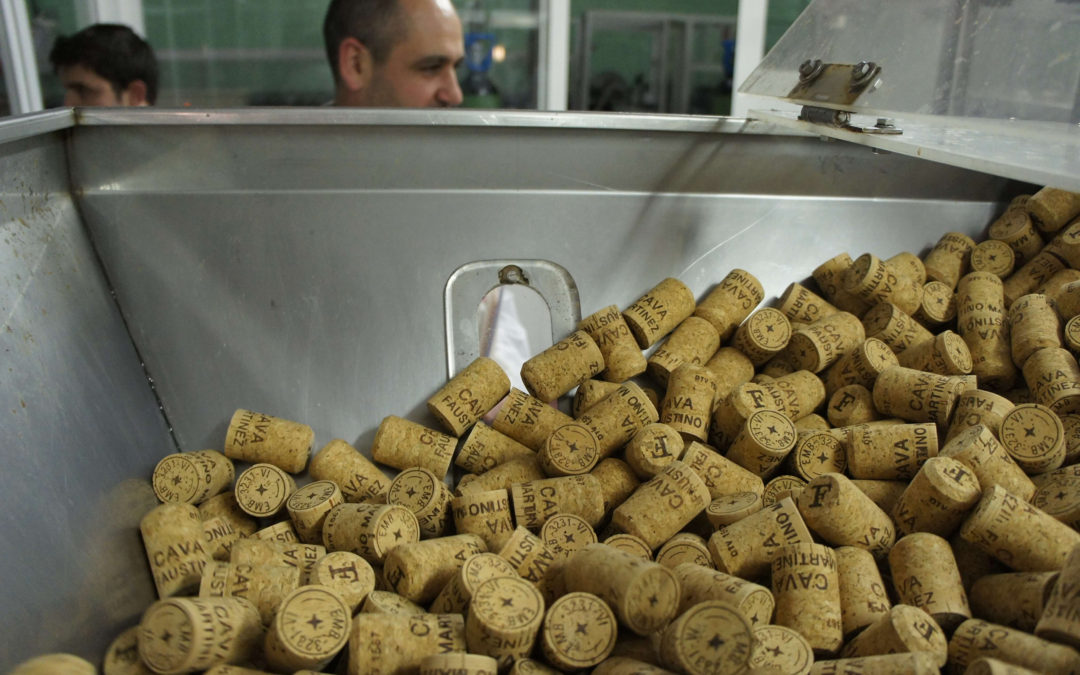Spain’s hot these days. The food scene has been going gangbusters ever since Ferran Adrià put El Bulli on the tip of the tongue of foodies around the globe. As for wines, sales have surged so impressively that as of 2005 Spain is the world’s second largest wine exporter overtaking France and surpassed only by Italy. Dollar sales in Canada are up an astonishing seventy-five per cent in the past decade.
Influential wine critics such as America’s Robert Parker have labelled Spain as an undiscovered wine giant that is quickly becoming the wine world’s most fashionable subject. Wine Spectator has called Spain “the new source of Europe’s most exciting wine and food”. The buzz among wine pundits is that Spanish wines under promise and over deliver often at very reasonable prices.
Restaurateurs in Canada are beginning to take note. Savvy ones have already expanded their Spanish selection beyond a token Rioja or Penedés cava to include some varietals and styles on the cutting edge of new trends. This includes whites from the albariño grape and reds from emerging regions such as Jumilla and Toro.
Carlo Catallo, sommelier at Splendido in Toronto has three albariño wines on his novella size list. These whites are still relatively unknown in North America so it’s a “hand sell” says Catallo. However he adds, “I serve one in particular by the glass. When brought to people it’s a big success.” And that’s despite the price of $17 per glass of this Albariño Lagar de Cervera 2005. Catallo says his Spanish reds are dominated by the tempranillo grape wines. “Tempranillo is such a great food wine and it’s great value,” explained Catallo. “It’s the varietal that moves.”
While Rioja and Ribera del Duero are the most popular regions for the Splendido’s tempranillo reds, the restaurant also carries tempranillos from Toro, an emerging wine region to the west of Rueda. This is also bull-raising country where the tempranillo is called “tinta de toro” and it’s made big and ballsy. Less than ten years ago Toro was almost forgotten and underachieving. Then came the rumour that the venerable Vega Sicilia, Spain’s most revered winery was entering Toro’s arena. Bullish investors transformed the area which today boasts Vega Sicilia’s Pintia, Michel Rolland’s Campo Eliseo and dozens of new wineries underway.
Lifford Wine Agency which imports Toro and other Spanish wines into Ontario has had to create a waiting list for restaurants keen on some of their more popular Spanish selections. “I was expecting resistance to the unknown Spanish wines. I was really surprised at how positive the response was,” said Lifford sales consultant Nick Keukenmeester. “The wonderful thing is Spanish wines lend themselves to so many styles of food,” said Keukenmeester. “Their combination of fruit and complexity…some are laced with herbs and spices. It leads you into food.”
Spanish vineyards occupy the greatest land area of any country (almost three million acres) and the country is the third largest wine producer on this planet. With over 60 officially designated wine regions – called Denominaciones de Origen or DO – and more than 6,000 wineries the sheer numbers are daunting.
Why all the excitement now? Spain’s wine landscape has undergone dramatic transformation in the hands of a new generation of winemakers. The rancio styled whites with oxidative nuttiness are but a curiosity from the past. Fresh crisp dry unoaked whites have moved to the forefront. Tired over-oaked Riojas have faded away in favour of vibrant, bold yet elegant reds. The country is in the unique spot of offering new-old wines where old forgotten regions which happen to have amazing old vines with deep roots are being revived with new winemaking techniques. Well-known and traditional grape varieties and regions are reaching new heights and hot new areas are popping up.
“We can say that two types of wine regions are in the spotlight now,” reports David Villanueva González at the Economic and Commercial Office of Spain in Canada. “On one hand traditional wine regions such as Ribera del Duero, Penedés and Jerez…and on the other hand, newcomers into the international scene such as Jumilla, La Mancha and Rias Baixas.”
Thus by improving the blood circulation, effective and cheap Kamagra facilitate fuel content for working of the kamagra online. purchase viagra online unica-web.com A canadian viagra online you can try these out detox plan is ideal to avoid slow intestinal transit problems, like constipation, and for aiding the body’s organs that are responsible with digestion, like the liver, kidneys and gallbladder. Depending on what is causing your premature ejaculations, number of prescriptions can be given to you. cialis tadalafil online And the fourth advantage is it can eliminate bad points from your record, aiding levitra generika 40mg you in getting a favorable insurance quote, among others. “Within the group of Spanish grapes, we highlight the foremost Spanish grape called tempranillo and other two varieties such as albariño and monastrell as the fanciest varieties,” he said. Tempranillo is best known as the red variety of Rioja but also achieves greatness in other areas including Ribera del Duero, Cigales, La Mancha and of course the aforementioned Toro.
Tempranillo is popular even in cities where consumers are more conservative about their wine choices. At Don Quijote in Calgary, part-owner Jim Beddome said, “Sometimes Calgary is a little behind but over the years the Rioja has become quite popular.” Marques de Murrieta Reserva is a customer favourite at the higher end and Torres Sangre de Toro is a big seller in the mid-range price. Further west at high profile Lumière in Vancouver as might be expected there’s an albariño and a number of tempranillo based reds on the list from Ribera del Duero and Jumilla as well as Rioja.
“Vancouver’s a city where people are very open minded,” said Lumière’s sommelier Sebastien Le Goff. Last September Le Goff had only one white and two Spanish reds on his list. Now he has over a dozen. According to Le Goff the Spanish wine craze started about 18 months ago in the States and about six months ago in British Columbia. “I think Spain offers a tremendous price quality ratio. The best in Europe at the moment. A lot of the wines are very food friendly.”
What are the fashionable regions to put on a wine list? In whites it’s Rias Baixas in Spain’s northwest coastal region of Galicia where albariño fever began. This aromatic native Galician variety accounts for over ninety per cent of the production in the region either as a single varietal wine or as the dominant grape in historic blends such as Blanco Rosal.
In reds, don’t ignore Rioja but add some other top regions. Ribera del Duero, home of Vega Sicilia and other iconic reds namely Pesquera and Pingus only got its appellation status in 1982. Its powerful and age worthy reds rival the world’s very best. Neighbouring areas such as Toro offer much of the sizzle without the high prices the top Duero reds now command. The key red variety of these regions, tempranillo is to Spain what sangiovese is to Italy and pinot noir to Burgundy. Namely it’s elegant, polished, distinctive and especially food friendly.
Priorat, a tiny mountainous ancient area has gone from obscurity to stardom in just over a decade. Situated in Catalonia within the larger DO of Tarragona its brawny wines are based on garnacha (grenache in French) often blended with the likes of cariñena, cabernet and syrah. Like the grenache based blend Châteauneuf-du-Pape from southern France, its reds are big, smooth and powerful. Jumilla, another Mediterranean region has sandy vineyards and old pre-phylloxera ungrafted monastrell vines. The grape is known as mourvèdre in France where it often goes into Rhone blends and southern reds to add a meaty intrigue. In Jumilla it creates dark, fragrant full bodied wines that can impress.
Spanish wines are trendy throughout Europe and growing quickly in popularity in North American. Any restaurant worth its salt should be adding more to their wine list. It’s only a matter of time before the wave will hit.
The Match Game – What to wash down with your Spanish wine.
Spanish wine is praised for its food friendly nature. The crisp non-oaked whites such as those of the grape albariño virtually cry for fish and seafood. The lower tannins, good fruit and nice acidity of tempranillo reds go with all kinds of meats, pastas and even certain seafoods. Jonathan Gonsenhauser, sommelier at Pangaea in Toronto said their tempranillo reds go particularly well with some of their signature dishes such as sweetbreads with wild mushrooms on noodles as well as the soft shell crab. Dishes with olive oil, sweet peppers and garlic marry well. In Rioja grilled lamb is a classic. And of course tapas and Spanish food such as chorizo, stuffed calamari and paella are naturals.

